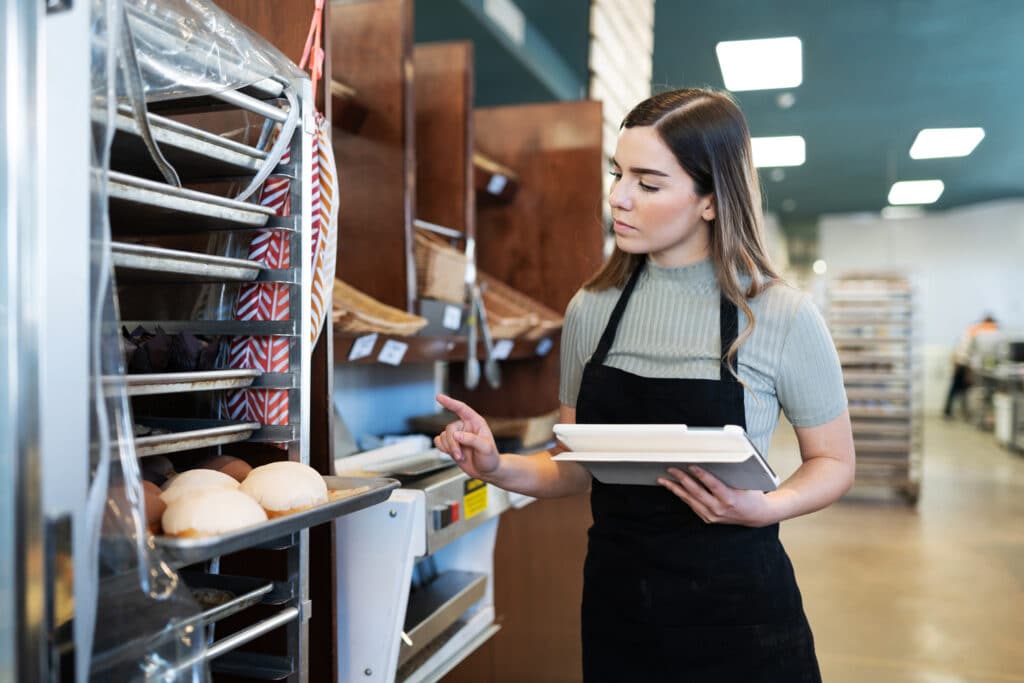By visiting our site, you agree to our privacy policy regarding cookies, tracking statistics, etc.
/
Identifying top-performing stores, managers, and others demands a system that provides accurate, real-time information about customer services, employee turnover, sales, profit, and Prime Cost
As restaurant companies grow into new locations, geographies, concepts, and service styles, management and operations must evolve. The good news is that the fundamentals of what makes a single restaurant location successful translate into multi-location groups. So, even as restaurant companies grow and become more sophisticated, they also contain the key to their success within themselves. The challenge is systematically identifying and replicating top performers across the organization.
Much of that success revolves around the location’s general manager.
“The GM is the heart of the restaurant. It is the most important position in determining the performance of a restaurant,” El Pollo Loco CEO Larry Roberts told Restaurant Business. “Restaurants with strong general managers, who understand their operations, establish a culture of caring for and respecting people while still holding them accountable, and look to develop their teams, far outperform those who do not in terms of customer service, employee turnover, sales, and profits.”
Identifying top-performing stores, managers, and others demands a system that provides accurate, real-time information about customer services, employee turnover, sales, profit, and Prime Cost. With an integrated restaurant management platform that consolidates the entire restaurant tech stack and automates once complex, time-consuming accounting and reporting functions, companies can identify which locations and leaders are excelling, benchmark performance expectations, and then dig into exactly what’s happening to replicate it companywide.
Traditionally, restaurant companies produced P&Ls at either the end of a month or another block of time, such as a quarter. While running a P&L once a month can provide an extensive overview of business operations, there’s far less insight into how day-to-day decisions impact sales and expenses. By the time a P&L comes after the end of the month, you may have been overspending on food or labor for a few weeks, making it too late to recoup extra expenses and cash.
Running a daily or weekly profit and loss statement helps managers take cost-saving action in the moment. By tracking the day-to-day strengths and weaknesses of the business, they can make immediate, informed adjustments to operations and avoid persistent, costly problems.
Advanced P&Ls are invaluable for multi-unit restaurant operators. With the ability to quickly generate complete, accurate P&Ls for the entire business and its constituent locations, leaders can compare P&L metrics for different locations side-by-side, highlighting top performers and variance and helping managers see where they can improve.
Even more valuable is when the P&L is live, enabling users to click into key sections such as sales, Prime Cost, operating expenses, and net profit and income. Then, digging into metrics like guest count, guest check average, total food and beverage sales (broken down by category), comps, promotions, and discounts provides a complete understanding of what’s driving top-line numbers and reveals best practices to implement across the business and taught to new or rising managers.
It’s one thing for this information to be in a report. It’s a different ball game when translated into visual, dynamic dashboards that leaders and team members can understand with a glance. While many industries today are data-driven, it hasn’t been as easy for restaurants. Due to the complex nature of each restaurant, accurately tracking costs and matching them against sales metrics, throughput, and more empirical KPIs like customer sentiment has made gathering, organizing, and communicating restaurant performance data more challenging than the Friday night dinner rush.
Things, however, always change, and with integrated, all-in-one restaurant management platforms that integrate with POS systems and third-party vendors and provide accurate, automated forecasting and budgeting, restaurant companies today have access to dashboards that can display and distribute data in a way that any restaurant leader or even team member can use to improve.
Restaurant dashboards should allow company leaders to see KPIs in terms of time, locations, or region, for example. Those KPIs can include sales, labor cost percentage, Sales per Labor Hour, sales per server, PMIX, and sales by channel and/or delivery vendor. On its own, for one location, this data is incredibly valuable. Restaurant managers, for example, have information like peak and trough sales times and the ability to schedule and cut staff in a way that regularly widens margins.
Yet the data becomes even more valuable when lined up across multiple locations. Here, restaurant leadership can identify top and bottom performers and confidently decide organizational benchmarks. Once these are set, those that fall above and below quickly emerge, and leaders can dig into the data to understand why top performers succeed, share those best practices, and even create training and mentorship opportunities for those who are struggling.

innovations supporting restaurant growth. While restaurant companies have long relied on growing their physical or, in this era, digital footprint to boost gross revenue, the opportunity to supercharge each location and turn each into a best-in-class to-and-bottom-line revenue generator is unprecedented. In doing so, restaurant leaders can ensure consistently strong financial results, unforgettable guest experiences, excellent employee experiences and retention, and longevity.
Share this blog:
500 Technology Drive, Suite 200
Irvine, CA 92618
Westech 360
8911 N Capital of Texas Hwy
Building 1, Suite 1200
Austin, TX 78759
Restaurant365 bridges the gap between accounting and operations by centralizing all data, helping restaurant operators to become more efficient, accurately forecast, and tackle any challenge or opportunity with speed and accuracy.